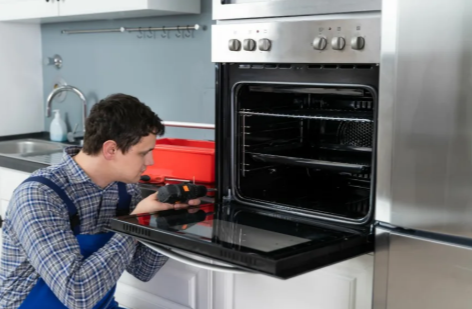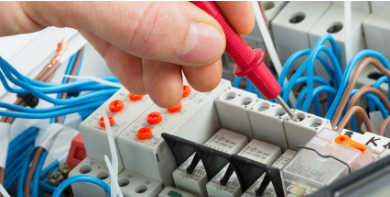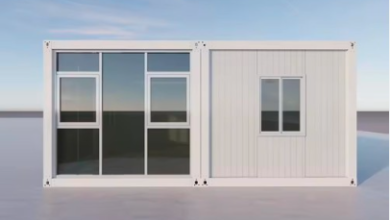Why Your Oven Door Won’t Close Properly: Causes, Fixes, and Maintenance Tips

An oven is one of the most essential appliances in any kitchen, relied upon for everything from baking holiday treats to preparing daily meals. But when your oven door refuses to close properly, it can disrupt your cooking routine, waste energy, and even pose safety risks. This comprehensive guide explores the common reasons why your oven door won’t close properly, how to diagnose the issue, practical solutions, and tips to prevent future problems. By understanding the root causes and fixes, you can restore your oven’s functionality and keep your kitchen running smoothly. For professional assistance, consider contacting a trusted oven repair service to ensure lasting results.
Understanding the Importance of a Properly Closing Oven Door
Before diving into the causes, let’s consider why a properly closing oven door matters. An oven door that doesn’t seal tightly can lead to several issues:
- Heat Loss: A gap in the door allows heat to escape, forcing the oven to work harder to maintain the desired temperature. This increases energy consumption and can result in uneven cooking.
- Safety Hazards: A partially open door can release hot air, posing a burn risk, especially in households with children or pets.
- Reduced Appliance Lifespan: The extra strain on the oven’s heating elements and thermostat can lead to premature wear and tear.
- Food Quality Issues: Inconsistent temperatures can ruin baked goods, roasts, or casseroles, leading to disappointing results.
Addressing the problem promptly not only improves your oven’s performance but also saves you money on energy bills and potential repairs. Let’s explore the most common reasons your oven door may not be closing properly and how to fix them.
Common Reasons Your Oven Door Won’t Close Properly
1. Worn or Damaged Door Gasket
The door gasket is a rubber or silicone seal around the oven door that ensures an airtight closure. Over time, this gasket can wear out, crack, or become brittle due to exposure to high temperatures and repeated use.
- Symptoms: The door closes but doesn’t seal tightly, leaving a small gap. You may notice heat escaping, uneven cooking, or the oven taking longer to reach the set temperature.
- Diagnosis: Inspect the gasket for visible cracks, tears, or areas where it’s loose or detached. Run your hand along the seal to feel for inconsistencies or brittleness.
- Fix: Replace the gasket. Most oven gaskets are held in place by clips or hooks and can be replaced without professional help. Check your oven’s manual for the correct part number, purchase a replacement from an appliance parts supplier, and follow these steps:
- Turn off the oven and let it cool completely.
- Gently pull the old gasket out of its track or remove the clips securing it.
- Clean the gasket channel with warm, soapy water to remove grease or debris.
- Install the new gasket, ensuring it’s securely attached and fits snugly.
- Turn off the oven and let it cool completely.
- Cost: A new gasket typically costs $20–$50, depending on the oven brand and model.
- Prevention: Clean the gasket regularly with a damp cloth and mild detergent to prevent grease buildup, which can degrade the material.
2. Misaligned or Damaged Hinges
The hinges on your oven door allow it to open and close smoothly. If the hinges are bent, rusted, or misaligned, the door may not close fully or may sit unevenly.
- Symptoms: The door feels loose, wobbly, or doesn’t align properly with the oven frame. It may close partially but leave a gap or require extra force to shut.
- Diagnosis: Open the door fully and observe the hinges. Look for signs of rust, bending, or wear. Gently wiggle the door to check for looseness. If the hinges don’t move smoothly or appear damaged, they’re likely the culprit.
- Fix: Depending on the severity, you may need to adjust or replace the hinges:
- Adjustment: Some hinges can be realigned by tightening screws or adjusting their position. Refer to your oven’s manual for specific instructions.
- Replacement: If the hinges are damaged, replace them. This may require removing the oven door (check your manual for instructions, as most doors can be detached by lifting them off the hinges). Purchase replacement hinges compatible with your oven model and install them carefully.
- Cost: Replacement hinges cost $30–$100 per pair, depending on the brand.
- Prevention: Avoid leaning on the oven door or using it as a resting surface, as this can strain the hinges over time.
3. Warped or Damaged Oven Door
In rare cases, the oven door itself may become warped or damaged due to prolonged exposure to heat, physical impact, or manufacturing defects.
- Symptoms: The door appears visibly bent or doesn’t sit flush with the oven frame. You may notice uneven gaps or difficulty closing the door even after checking the gasket and hinges.
- Diagnosis: Place a straightedge (like a ruler) along the door’s surface to check for warping. Inspect the door for dents, cracks, or other damage.
- Fix: A warped or damaged door usually requires replacement. Contact your oven’s manufacturer or a local appliance repair service in North Vancouver to source a compatible door. Replacing the door is more complex and may require professional assistance, especially for built-in or gas ovens.
- Cost: A new oven door can cost $100–$300, plus labor if professional installation is needed.
- Prevention: Handle the oven door gently, and avoid slamming it shut or placing heavy objects on it.
4. Obstructions or Debris
Grease, food splatter, or debris in the door’s frame or latch mechanism can prevent it from closing properly.
- Symptoms: The door feels like it’s hitting something when you try to close it, or it closes but pops back open slightly.
- Diagnosis: Inspect the door frame, latch, and hinges for grease, crumbs, or foreign objects. Pay special attention to the latch mechanism, as small debris can interfere with its operation.
- Fix: Clean the affected areas thoroughly:
- Turn off and unplug the oven for safety.
- Use a damp cloth and mild detergent to clean the door frame, latch, and hinges.
- For stubborn grease, use a mixture of baking soda and water or a specialized oven cleaner (ensure it’s safe for your oven’s surfaces).
- Dry the areas thoroughly to prevent rust.
- Cost: Minimal, as cleaning supplies are inexpensive.
- Prevention: Clean your oven regularly to prevent grease and debris buildup. Wipe down the door and frame after each use to keep them free of obstructions.
See Also: problem solving techniques book
5. Faulty Door Latch or Lock
Many modern ovens have a latch or lock mechanism, especially for self-cleaning models. If the latch is misaligned, damaged, or malfunctioning, it can prevent the door from closing securely.
- Symptoms: The door doesn’t lock properly during self-cleaning cycles, or the latch doesn’t engage when you close the door.
- Diagnosis: Test the latch by gently closing the door and observing whether it engages. If the latch feels loose or doesn’t catch, it may be faulty. For electronic latches, check for error codes on the oven’s display.
- Fix:
- For mechanical latches, try lubricating the mechanism with a food-safe lubricant or adjusting its alignment (consult your manual).
- For electronic latches, the issue may be with the oven’s control board or wiring, requiring professional diagnosis.
- If the latch is damaged, replace it with a compatible part.
- For mechanical latches, try lubricating the mechanism with a food-safe lubricant or adjusting its alignment (consult your manual).
- Cost: A replacement latch costs $50–$150, with additional costs for professional repair if needed.
- Prevention: Avoid forcing the door closed during self-cleaning cycles, as this can damage the latch.
6. Issues with the Oven’s Frame or Structure
In rare cases, the oven’s frame or body may be misaligned, preventing the door from closing properly. This can occur due to improper installation, physical damage, or wear over time.
- Symptoms: The door doesn’t align with the oven body, even after checking the gasket, hinges, and latch. The oven itself may appear uneven or tilted.
- Diagnosis: Use a level to check if the oven is properly balanced. Inspect the frame for signs of damage or distortion.
- Fix:
- If the oven is not level, adjust its feet or reposition it to ensure it’s even.
- For structural damage, contact a professional appliance repair service, as this may require specialized tools or replacement parts.
- If the oven is not level, adjust its feet or reposition it to ensure it’s even.
- Cost: Varies widely depending on the extent of the damage and repair needs.
- Prevention: Ensure proper installation when setting up your oven, and avoid moving it unnecessarily.
When to Call a Professional
While many oven door issues can be resolved with DIY fixes, some situations require professional expertise:
- Complex Repairs: Issues involving electrical components, control boards, or structural damage should be handled by a qualified technician.
- Gas Ovens: If you have a gas oven, never attempt repairs yourself due to the risk of gas leaks or fire hazards.
- Warranty Concerns: If your oven is under warranty, contact the manufacturer or an authorized repair service to avoid voiding the warranty.
- Persistent Problems: If you’ve tried the above fixes and the door still doesn’t close properly, a professional can diagnose underlying issues like internal sensor failures or control board malfunctions.
In North Vancouver, look for reputable appliance repair services with experience in your oven’s brand. Check reviews and ensure the technician is licensed and insured.
Preventative Maintenance Tips
To keep your oven door functioning properly and avoid future issues, follow these maintenance tips:
- Clean Regularly: Wipe down the door, gasket, and frame after each use to prevent grease and debris buildup.
- Inspect Components: Periodically check the gasket, hinges, and latch for signs of wear or damage.
- Handle with Care: Avoid slamming the door or placing heavy objects on it, as this can strain hinges and warp the door.
- Schedule Professional Maintenance: Have your oven serviced annually by a professional to catch potential issues early.
- Follow Manufacturer Guidelines: Use your oven according to the manufacturer’s instructions, especially during self-cleaning cycles, to avoid damaging components.
Troubleshooting Checklist
If your oven door won’t close properly, use this quick checklist to identify and resolve the issue:
- Inspect the Gasket: Look for cracks, tears, or looseness. Clean or replace if necessary.
- Check the Hinges: Ensure they’re not bent, rusted, or misaligned. Adjust or replace as needed.
- Examine the Door: Look for warping or damage. Consider replacement if the door is compromised.
- Clean for Obstructions: Remove grease, debris, or food splatter from the frame and latch.
- Test the Latch: Ensure the latch engages properly. Lubricate or replace if faulty.
- Verify Oven Alignment: Check if the oven is level and adjust if needed.
- Consult a Professional: If the issue persists or involves complex components, contact a repair service.
Conclusion
A properly closing oven door is essential for efficient cooking, energy savings, and kitchen safety. By understanding the common causes—such as worn gaskets, misaligned hinges, or debris buildup—you can diagnose and fix the problem with confidence. Many issues can be resolved with simple DIY solutions, but don’t hesitate to call a professional for complex repairs or gas ovens. Regular maintenance and careful use can prevent future problems, ensuring your oven remains a reliable kitchen companion.




